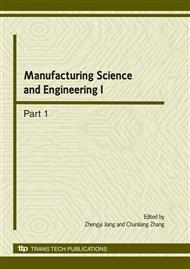p.1273
p.1277
p.1285
p.1290
p.1295
p.1301
p.1306
p.1312
p.1317
The High Temperature Property of Ni/WC Infiltrated Composite Layer on Cast Iron Substrate
Abstract:
The surface composite layer Ni/WC on the cast iron substrate was fabricated through vacuum infiltration casting technique using Ni-based powder and WC particles with different content as raw materials. The micro-structure of infiltrated layer was compact for all infiltrated layer with different WC content, and WC particles distributed uniformly. The surface infiltrated layer was mainly composed of WC particle, intermetallic compound and solid solution. The thermal cycles were beyond 108 times when the infiltrated layer peeled off, which indicated that the specimen with infiltrated layer offered excellent thermal fatigue property. The oxidation rate of substrate was nearly three times as large as that of the infiltrated layer with 20% WC content. The oxidation resistance of the infiltrated layer improved obviously comparing with the substrate because the oxide layer for infiltrated layer was compact.
Info:
Periodical:
Pages:
1295-1300
Citation:
Online since:
March 2010
Authors:
Price:
Сopyright:
© 2010 Trans Tech Publications Ltd. All Rights Reserved
Share:
Citation:


